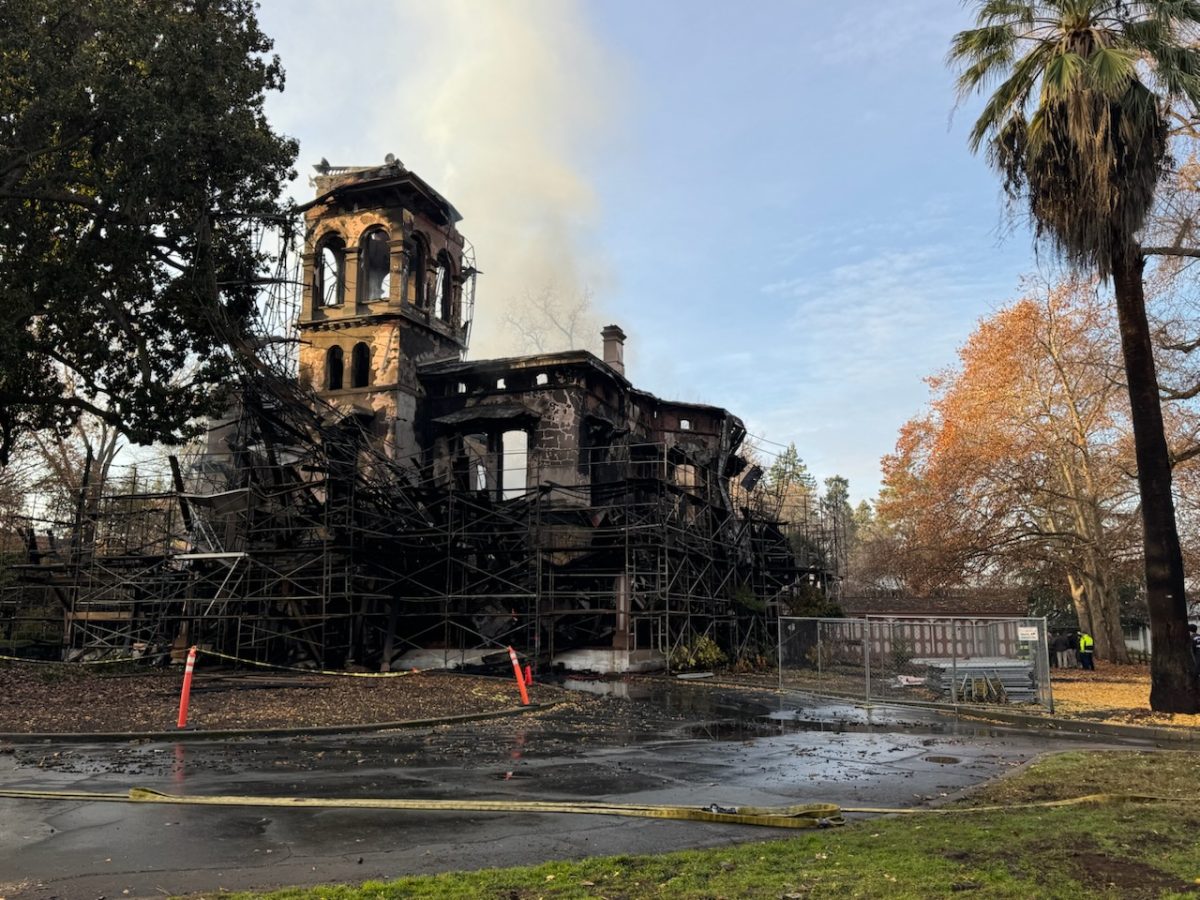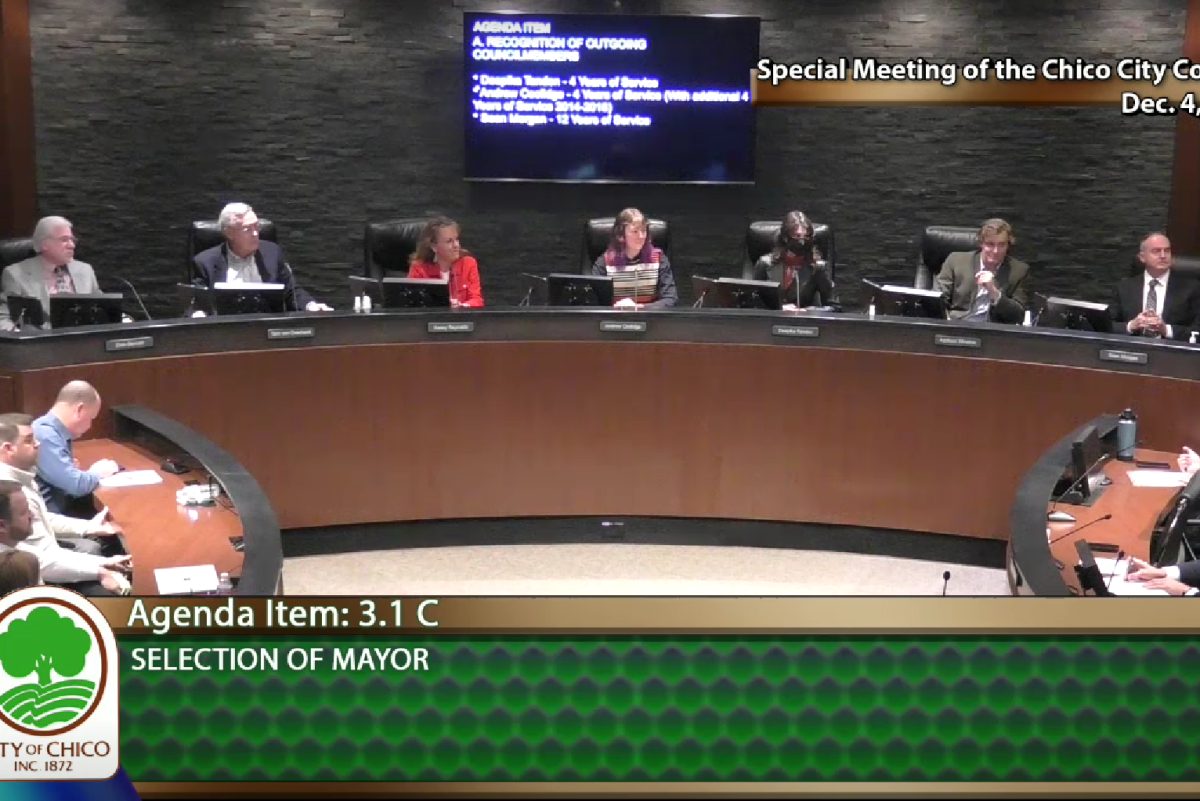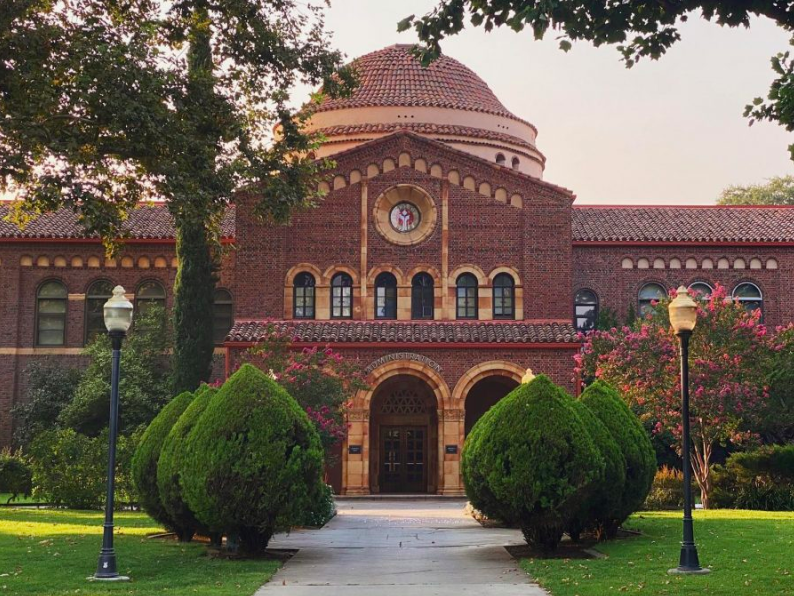
The Chico City Council is taking steps to exterminate an invasive plant species that could spark fires along Little Chico Creek.
It voted unanimously Oct. 20 to pay $1,500 for a grant writer to ask state agencies to fund a project that would remove the plant species known as Arundo donax from Little Chico Creek.
The grants will ask for $500,000 to fund the three-to-five year plant removal program, said Mark Stemen, Chico State geography professor and president of the Butte Environmental Council. The removal process would start within one year and a crew from the California Conservation Corps would be responsible for removing the plants.
The plant looks like bamboo, according to the Sonoma Ecology Center. It can grow four inches per day and up to 30 feet tall. It mostly grows in damp places such as streams, consumes four times more water than other plants situated in river banks and doesn’t provide food nor shelter for insects and birds.
“If a fire started in Little Chico Creek, it would probably take out 150 homes like the Weed fire did,” Stemen said. The Boles Fire in September destroyed 157 homes and eight nonresidential commercial properties in the city of Weed. The fire burned more than 500 acres of land.
Stemen led a class of students on a field trip up to Little Chico Creek where they mapped out areas in which the Arundo plants were growing.
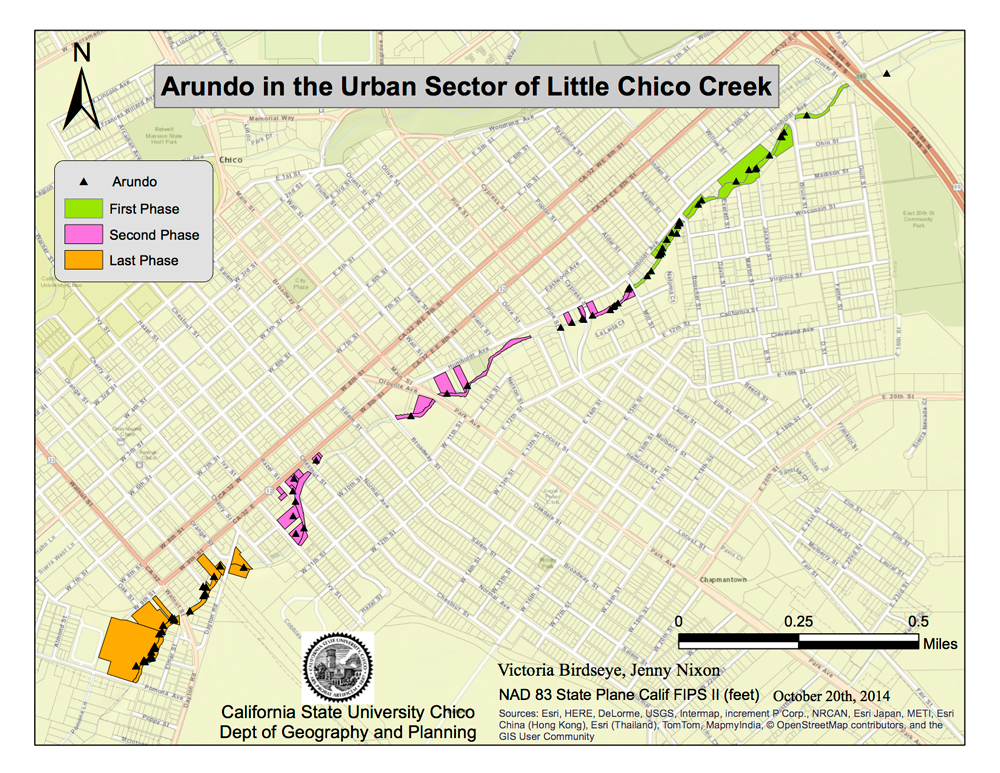
Victoria Birdseye, senior geography major, made the map with her classmates. After determining the coordinates with a Garmin GPS system, she used the app Collector for ArcGIS to upload the locations.
“Making a map of the Arundo is an important way to convey information about the hazardous condition and extent of Arundo in the urban part of Little Chico Creek,” Birdseye said.
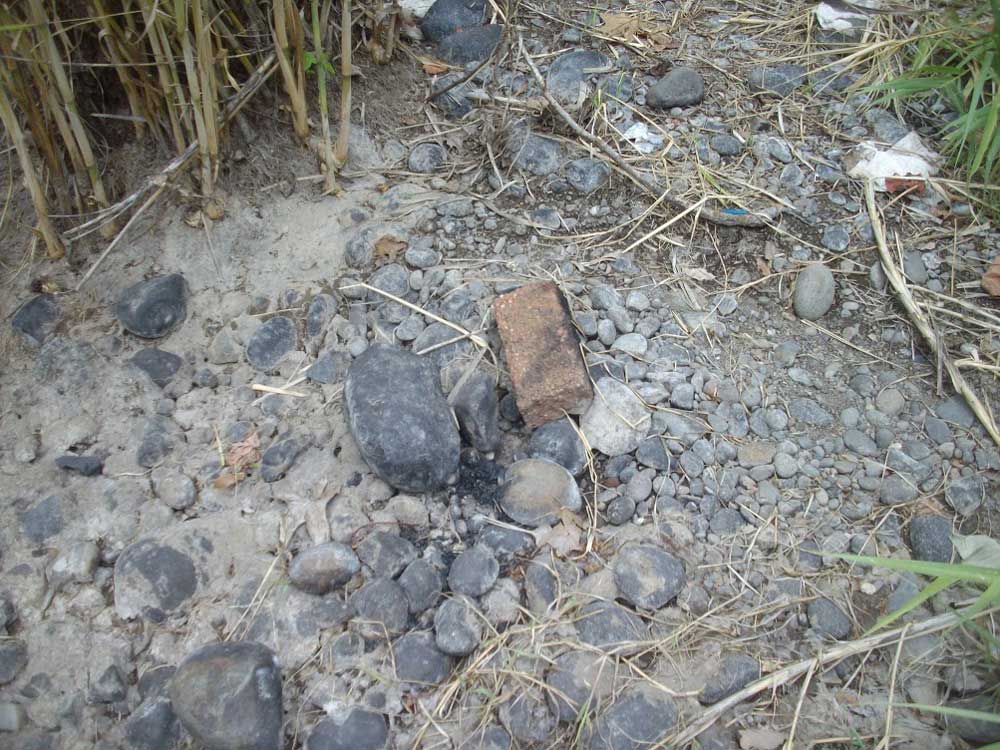
The class was surprised to find homeless camps made out of Arundo when walking along the creek, Stemen said. Each camp had its own fire pit.
Interim Chico Fire Chief Shane Lauderdale, who proposed the project idea, said the Arundo is growing extensively on both public and private property and its massive fuel load poses a threat to commercial and residential structures near the creek.
Stemen said the grant writer will apply to the Department of Water Resources Urban Streams Restoration Program and Cal Fire’s Fire Fuel Reduction Grants.
Most of the money would go toward hard labor and about 10 percent will go toward public education, Stemen said.
Anna Sobrevinas can be reached at: [email protected] or @manilanna on Twitter.



